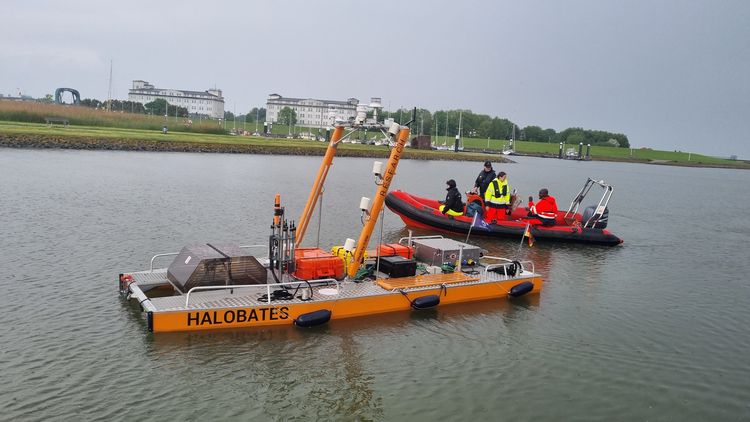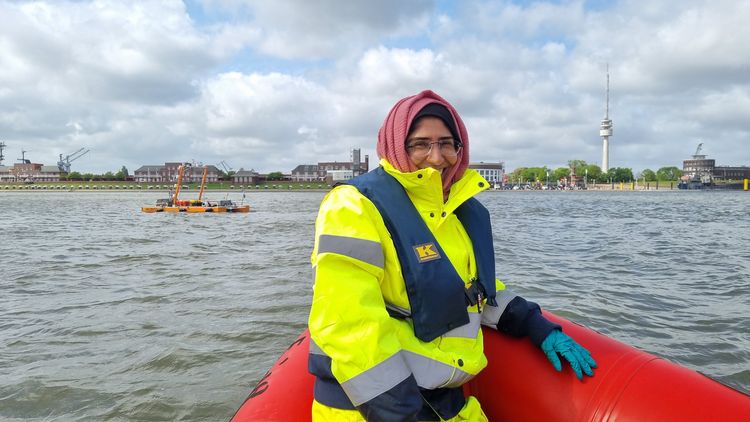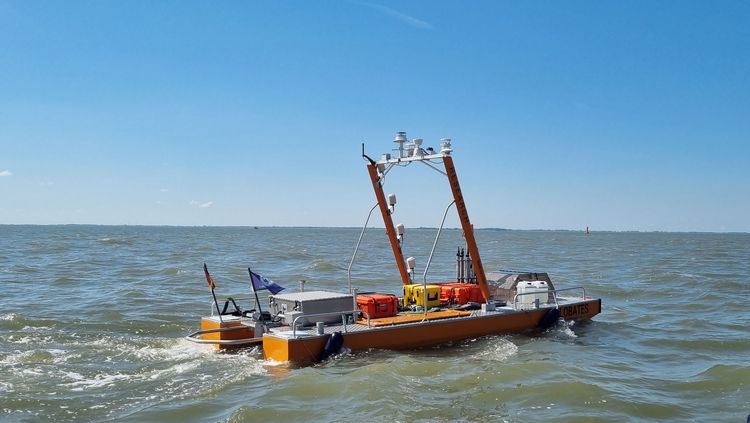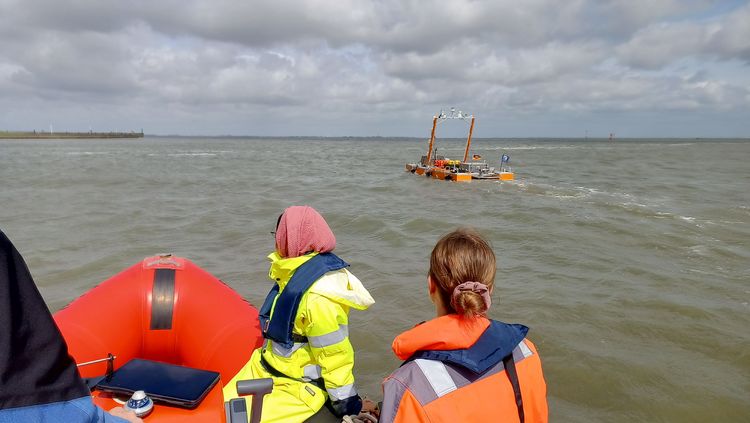Our oceans have a central function for the global climate. They store greenhouse gases and heat, can transport them thousands of kilometers, and partially release them back into the atmosphere. All these exchange processes between ocean and atmosphere take place in the less than one millimeter thin surface layer and their role in marine biogeochemistry and climate science is still poorly understood. Scientists of the DFG Research Unit BASS (Biochemical Processes and Air-Sea-Exchange in the Sea-Surface-Microlayer) want to change this and have invited for a large-scale experiment at the ICBM site in Wilhelmshaven.
For five weeks, 18 researchers from 6 institutions collected samples in the Jade Bay, conducted experiments in the experimental facility and analyses in the laboratory. In the basin of the Sea Surface Facility (SURF), they observed the water surface in a 30-day time series study, including the formation of biofilms on the water surface and the exchange of heat and climate-relevant gases. They managed to get an algal bloom to form in the outdoor pool so they could observe the change on the surface as the bloom grew and died and bacteria decomposed the remains. "Surface films are very different in character and have a crucial influence on ocean-atmosphere interactions," explained Prof. Oliver Wurl, spokesperson for the DFG Research Unit BASS. "Due to their location between ocean and atmosphere, the surface films - which can have biofilm-like properties under certain conditions - receive a very high dose of UV radiation and light, which causes unique photochemical reactions." The surface film functions like a biochemical reactor, and the research team wants to understand exactly how this reactor works and what factors cause these biofilms to form in the first place.
The research team used a variety of technologies from the Center for Marine Sensors. For example, sensors and probes provided real-time data on turbidity, algae growth, temperature and other parameters around the clock.
Parallel to the measurements in SURF, daily samples were taken in the Jade Bay with the help of the research catamaran Halobates. Examined for the same parameters, these samples provide information about the natural processes in the sea. They are thus the comparison to the data obtained under defined conditions in the basin. The six-meter-long catamaran can sail autonomously and thus take samples without interference. Sensors on board measure the surface films and the underlying water in real time, resulting in a map of the ocean surface from various parameters. Halobates was completely developed at the Center for Marine Sensors.
In addition to the ICBM, the universities of Hamburg, Kiel and Vienna, the GEOMAR Helmholtz Centre for Ocean Research Kiel, Leibniz Institute for Tropospheric Research TROPOS and the Helmholtz Center Hereon are involved in the large-scale experiment and the DFG Research Unit BASS.

![[Translate to English:]](/f/5/_processed_/3/2/csm_ICBM-Logo-transparent-_91fe1c6774.png)



